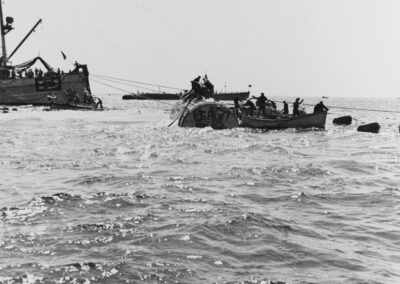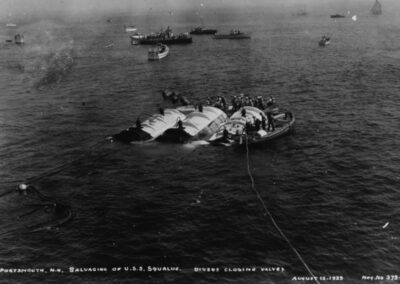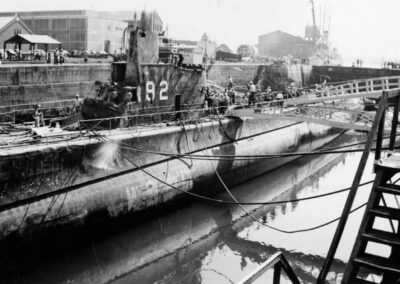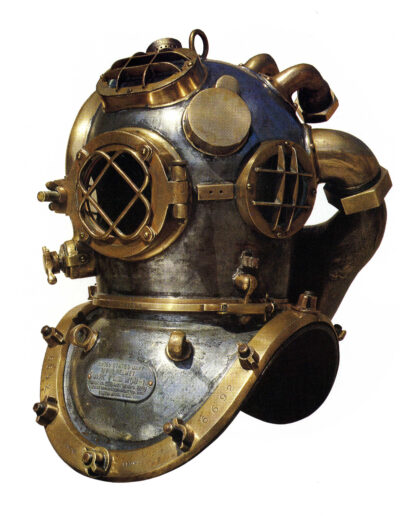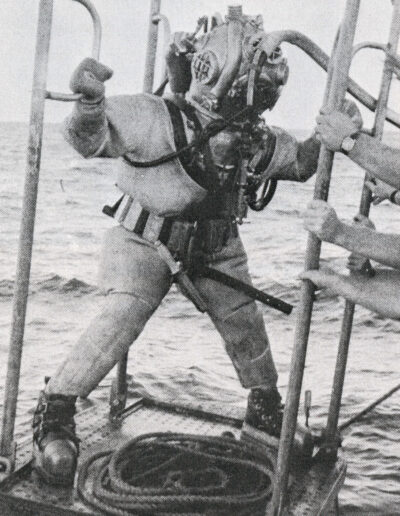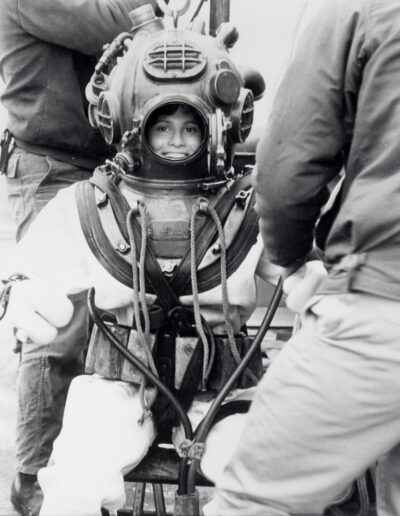Helium-Oxygen Breathing Mixture
 The Challenge
The Challenge
Breathing compressed air below depths of 165 feet could cause nitrogen narcosis, impairing diver judgment and awareness, which endangered the diver and the diving operation.
 The Solution
The Solution
In the 1930s, NEDU developed and perfected a new breathing gas mixture using helium. Breathing helium-oxygen made deep-sea diving safer and let divers dive deeper. Today using helium is standard Navy practice for surface-supplied dives to 190 feet or greater.
USS Squalus Salvage
In May 1939, submarine USS Squalus (SS 192) sank in 243 feet of water. The salvage operation provided the first real test of NEDU’s helium-oxygen breathing mixture. After divers experienced disorienting nitrogen narcosis while breathing air, they were switched to helium. Breathing helium eliminated the effects of nitrogen narcosis and allowed the divers to work longer and more efficiently.
MK V Mixed Gas Rig
Helium was not only expensive, it also increased a diver’s buoyancy. Adopting helium as a breathing gas required the Navy to develop a helium version of its surface-supplied diving rig, the MK V. The helmet was modified to recycle breathing gas by scrubbing (removing) carbon dioxide, reducing helium costs. To compensate for the positive buoyancy helium introduced, the rig’s weight was increased by 100 pounds.

